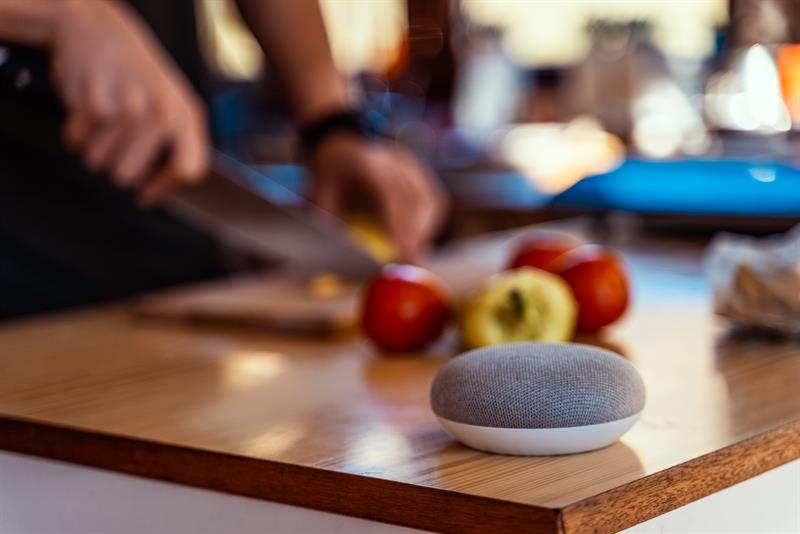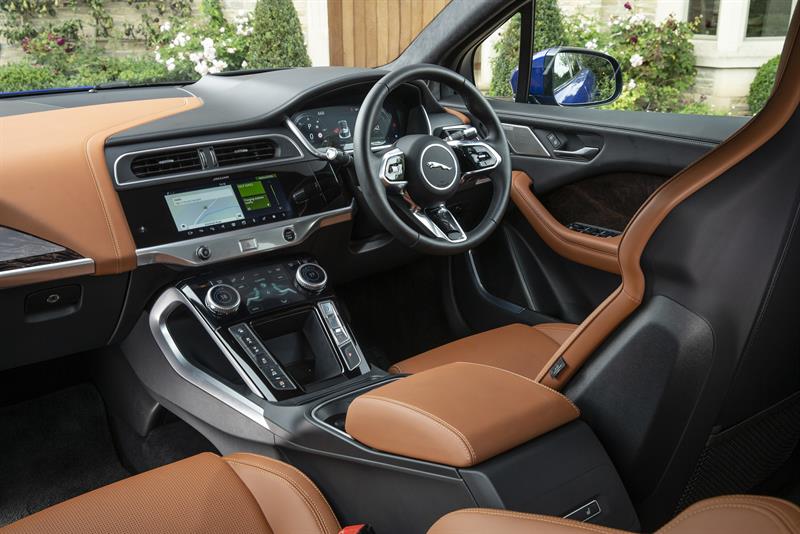Streaming services are investing heavily in quality sound and new technology for speakers, sound bars, and immersive sound systems are appearing on the market.
How we consume audio is changing, whether that’s in the home, on the move or at work and in the world of VR, AR, and MR spatial audio is becoming better known. The gaming industry is a good example of an industry that is using sound to create a more immersive experience for players.
There is also a growing awareness that with the amount of audio visual art and entertainment that is now being consumed, it is no longer acceptable that when it comes to the development of new products sound systems are included that fail to enhance or complement the video quality that consumers have come to expect.
The consumer audio landscape is evolving quickly. Consumers are keen to embrace new technologies as they seek high quality, wire-free audio experiences.
They want longer playback times, a truly wireless earphone experience and are looking to embrace Voice UI’s, which today are playing a major role in shaping the way people access and enjoy audio.
The move towards wireless comes with a growing demand for ever-better sound quality and, according to a report from Qualcomm released over the summer, sound quality is the number one issue among audio consumers globally.
The company found that consumers want rich, clear audio quality and that is now the top-ranking purchase driver for 65 percent of consumers. When it comes to smart speakers, specifically, sound quality is even more important than price for many shoppers.
Truly wireless earbuds have exploded in popularity and have become one of the most sought-after devices in the headphone category.
Driven by improvements in Bluetooth audio and technologies like aptX, there’s been a notable shift in the perception of wireless sound quality.
As already mentioned, another important demand, in this space, is for more playback time. Consumers want to be able to enjoy their wireless headphones and speakers for longer periods between charges.
The demand for greater wireless freedom to listen to music reflects a growing trend in which people want to add a soundtrack to their whole day. Qualcomm’s research found that 70 percent of all respondents rated extended battery life as the most important purchase driver.
Listener preferences are also changing and how we consume content is changing, and that will have significant implications for the next generation of wireless audio and the way in which people interact with their smart speakers.
Speaking at last month’s Audo Collaborative event, hosted by Futuresource Consulting in central London, Carsten Oleson, the President of HARMAN’s Consumer Division made the point that with a world filled with screens and more and more visual imagery it has become, “All a bit too garish, a bit fake or simply too much.
“Increasingly, consumers prefer to put their trust in a different kind of experience, something a bit more honest and intimate that can touch them more deeply.”
Oleson pointed to what he called an emerging ‘Sonic Revolution’ and to the findings of a recent study conducted by Spotify among Millennials and Generation Z consumers that found that a majority said they believed that there was ‘too much visual stimulation’ and that sound was becoming ‘more and more important in everyday lives’.
“Over half of the people that were surveyed said that their music consumption had increased and I believe that we are seeing a big comeback in terms of audio. In fact neuroscientists have confirmed that listening provides the consumer with a more intense experience than simply watching something.”
According to Oleson, “We are seeing a new culture around listening developing and there seems to be a longing for more authentic moments when it comes to experiences.
“Here’s where technology comes into play. It can act as a catalyst for this change, adding to augmenting the world of sound and not just supporting the visual experience. Technology offers people unlimited ways to experience sound and it is able to address the growing demand that we are seeing for a more personal or personalised experience that can be immersive or fine-tuned by the user.”
According to Oleson, we are “entering the decade of sound!”
He backed up that claim by pointing out that acoustic formats and experiences are on the rise, “Just look at podcasts, audiobooks, music streaming and of course connected speakers.
“We are surrounded by sound more than ever before. I believe that after a decade dominated by visual media and culture, sound will take centre stage and people, companies and institutions will increasingly approach the world with a sound-first mindset.”
Crucially, the enjoyment of sound is no longer dependent on a dedicated device, as our sound experience has now become mobile.
“From the car to the living room or gym and from the garden to the bathroom, our audio experience is now seamless, without interruption,” said Oleson.
“That has been one of the key benefits of technology. Another is that it also gives us the opportunity to customise the sound experience to our individual preferences and needs.
“Possibly the most important future trend in the audio space concerns artificial intelligence (AI) and how that will help to open up exciting new frontiers.
“Music composed entirely by AI? Well, you can already find that by looking on YouTube.”
Smart home
Speaking at the same event Simon Forrest, Principal Technology Analyst, Futuresource Consulting focused on the smart home and developments in how audio is being deployed.
“The smart home of today is really all about the touchscreen, smart appliances and environmental controls,” he explained.
“These devices are certainly becoming smarter but what is getting more interesting is that voice systems are developing just as quickly with the advent of AI and machine learning.”
He suggested, however, that despite these developments, in truth, machine learning remains flawed and that today’s AI is still “pretty dumb”.
“Any learning happens in the cloud and on big machines located in a massive server farm,” he said.
According to Forrest the truly smart home is some way off but is likely to include a combination of AI, biometrics, gesture controls and conversational platforms.
“Voice needs to become more conversational but as communications technology gets faster, voice will become the primary interface.
“Today, we have Alexa, Google Home, Apple’s Siri, Cortana from Microsoft and AliGenie from Alibaba, but all of them, while the lexicon is improving through the use of machine learning, remain essentially ‘command and control’ in nature.”
Voice only systems are some way off, according to Forrest, but things are moving quickly.
“All the main vendors are looking to improve language support in order to develop a more natural interaction and a much more fluid process. But they are also looking at combining smart speakers with cameras, so that with the use of AI we can hold up a product – say a bunch of bananas – and ask our smart speaker to order ‘five of these’.”
That, according to Forrest, is technically very challenging to achieve.
“You’re combining ‘command and control’ with biometrics and visual recognition, in this case, so we do need things to be much more simplistic. We need natural language along with a visual recognition system that has to be quite smart because it has to not only recognise something but understand shapes and sizes as well.”

Work experience
Turning to the work environment Jeremy Keefe, Regional Vice President Sales, UK & IRE, Poly, in looking at the evolution of the workplace and workspace said that how we communicate and go about our business has changed drastically over the years.
“Today we have flexible office spaces and huddle rooms. But how many of those are actually fit for purpose for every type of meeting?”
According to Keefe, mobility is now a massive commercial driver for Poly.
“The demand for flexible office spaces that allow people to be flexible in their approach is growing rapidly but, that begs the question: How do you give them the right tools in a secure environment? That is the biggest challenge we have today as vendors in this marketplace.”
The rise of the ‘huddle room’ environment is making people more productive but as people use mobile phones or their laptops to communicate, many want flexibility in their working habits and they want technology that delivers a similar level of service whether that’s a room system or via a mobile phone.
They need the tools to be able to communicate, collaborate and share, wherever they are.
“While we can all live with a poor video connection that is only true as long as we can hear what is being communicated.
“Audio is vital in the office environment of today and it’s about providing the right level of communication, whether people are physically present or whether they’re remote.”
Keele argues that while audio is critical users also need to be able to see the people they’re communicating with – in terms of audio and video, it’s not either or, but both.
“Video and audio collaboration across multiple countries, across multiple devices is becoming more and more important.”
Automotive
The car industry is going through a huge, quantum shift with the growing use of technology. Research has found that ‘great’ audio inside the car can increase overall vehicle satisfaction by as much as 30%.
“If OEMs aren’t thinking about audio, they certainly need to be because if you can create that fantastic audio experience you will drive up overall vehicle satisfaction and that’s a huge win for the OEM as well as their consumers,” explained Callum Hubbard, Lead Engineer, Audio Strategy at Jaguar Land Rover.
When it comes to audio technology and the automotive space, the discussion tends to focus on noise cancellation, surround sound and 3D sound.
“Crucially, especially in the future, OEMs designing cabins will need to know where exactly listeners will be sitting in order to take advantage of audio technology.”
Hubbard made the point that with the advent of autonomous vehicles that may no longer be as simple, as seats may rotate.

The Jaguar I-PACE interior incorporates Touch Pro Duo, Interactive Driver Display and the Meridian Sound System
“I think there’s going to be a lot of interesting developments around how you continue to provide high level audio, regardless of what configuration we see in vehicle cabins. It’s challenging but there will also be a lot of opportunities,” he suggested.
Among those opportunities is the use of audio in navigation.
“What if you can use audio to say deliver a better navigation experience? The range of possible experiences inside the cabin is growing rapidly and we need to look at bringing audio technology to the forefront to help solve many of them.”
An area of particular interest is in the development of electric vehicles.
“Consumers want these silent vehicles to provide an engine roar but there are also safety concerns to take into account - EV’s are silent, so how do we make sure that we create external noises that can signal to people that a vehicle is approaching?
“Not only that, if you take the engine out of the car you now have the ability to put speaker amplifiers in different places to create a better sound environment - fewer parts and fewer speakers - but because you can put them all in the right location, you will be able to enhance the infotainment experience while reducing the complexity in the car.”
Whatever the user experience sound/audio quality is crucial.
Good sound quality tends to trigger positive emotions and bad sound quality triggers negative ones, such as dissatisfaction or disappointment, all of which can make or break the consumer experience.
It’s no longer possible for OEMs and developers to ignore audio as an essential part of the consumer experience, so perhaps the coming decade will be the ‘audio decade’.













